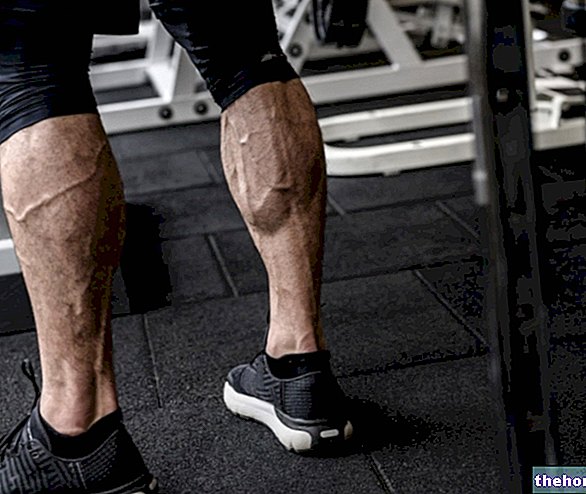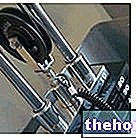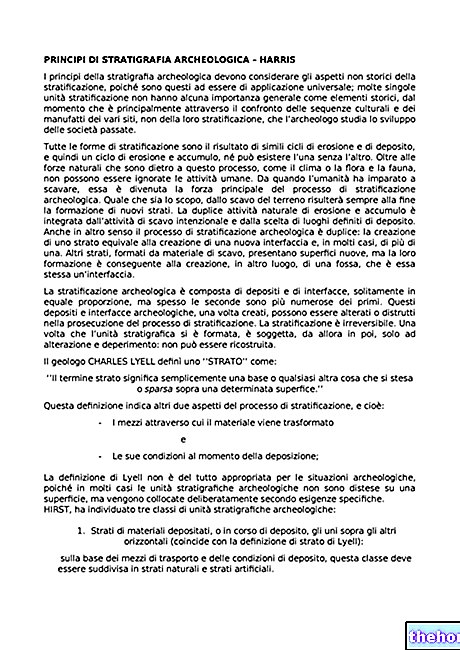The percentages of intensity ≥ 85% 1RM (up to 100) are defined as "high".
In the context of endurance disciplines, high intensity allows to improve the anaerobic threshold, the anaerobic-lactacid metabolism beyond the threshold and the maximum oxygen consumption - thanks to cardio-circulatory, respiratory and muscular adaptations.
That sounds easy, but it's not at all.
High intensity limits
Intensity is only one of the three elements that structure the global load, and the importance of the other two (volume and density) is very much a function of the athletic ability to be stimulated.
High intensity is always associated with an important anaerobic component; moreover, it requires suitably long regeneration times - which results in lower density and lower volume.
This is because it has a very high energy cost, tends to deplete muscle phosphages and / or glycogen, often releases high concentrations of lactic acid, stresses the joint, tendon and muscle structures a lot, strains the central nervous system a lot and still needs a " high threshold of mental concentration - without which the chances of injury can increase.
According to what has been described, it would seem that muscle failure is necessarily associated with the application of high intensity. In reality this is not the case; below we will understand better why.
In practice, if you want to stimulate maximum strength in flat bench presses, it would be useless to try to move 1RM repeatedly; you would only be able to do this once or twice, causing the volume to be insufficient.
Same goes for a marathon runner who intends to train constantly on the race distance at maximum speed; could not train close enough, making the total volume insufficient.
In short, high intensity is undoubtedly a fundamental characteristic of training, but at the same time it must allow to maintain sufficient volume and density.
High intensity: different interpretations
For a distance runner, training intensity is a function of maximum oxygen consumption or anaerobic threshold; during the routine, he will be able to evaluate this parameter by means of external load factors (such as speed, duration, distance, etc.) or internal load factors (especially heart rate or, in aptitude tests, also blood lactate concentration or ventilatory gases).
For a crossfitter who intends to train resistant strength in the burpees gesture in a duration of 3 ", the maximum intensity will correspond to the maximum number of repetitions (reps) that can be performed in that series or round (set).
However, In the resistance training with overloads aimed at developing strength and muscle hypertrophy, the intensity of exercise is almost always related to the percentage of the single maximum repetition (% 1RM).
What is the percentage intensity estimate for?
Calculating the percentage of intensity is simply one way to measure it.
Since intensity is inversely proportional to volume and density, if it were not possible to measure it, it would be equally unlikely to be able to program the training phases and plan the individual workouts.
There are also specific tables - more or less accurate - which summarize the relationship between% RM and rep of the same set. Then it goes without saying that the recovery must be adequate, as well as the number of sets and the times of muscle tension (TUT).
These relationships are based on the maximum reps that can be performed with a certain percentage of intensity, implying the achievement of concentric muscle failure. On the other hand, it is possible to adopt high percentages of intensity while maintaining a certain reserve of repetitions.
This system, called a buffer, is used to limit muscle stress within the workout. Because a high degree of muscle tension can develop strength and hypertrophy even independently of muscle failure, you can get good results keeping the percentages high, reducing the number of reps (thus working as a buffer) and possibly increasing the number of weekly stimuli for the same muscle.
, the intensity and its modulation are exclusively linked to the expression of force and / or to the increase in muscular stress (maximum at failure).
The training load can also be increased thanks to some techniques, which however act not only directly on the intensity, but also indirectly, influencing at the same time the volume and density of the stimulus - thanks to other related training parameters.
Pre Tired in Super Set
The pre-fatigue in super set (agonist muscles) is a training technique that is based on the management of the weakest and strongest muscles involved in a certain movement, in order to make the training stimulus more effective and specific.
In multi-joint exercises, which therefore involve more muscle groups, it frequently happens that the yielding limit is gained earlier by the smaller muscles than those that we would like to "pump" more.
For example, in the barbel row, conceived above all for the development of the back, the inability to continue is often given by the inability to flex the forearm rather than to adduce and / or extend the humerus.
In this case we will choose to pre-tire the large back muscles with a more manageable exercise in terms of isolation, such as the straight arm pull down, to which we will then associate the multi-joint.
E.g .: straight arm pull down 4-5 rep in super set with barbel row 1 set x 5-6 rep.
Rest pause
In Italian, "recovery break", however, should not be interpreted as the classic recovery between sets.
It consists of an intermediate time between a predefined number of reps and another; after this pause, which can be 5-10-15-20 or even 30 seconds, you will perform another number of reps, and then continue with another "pause and so on, repeating this pattern for two, three or four mini sets.
Ex .: 1st set 8-10 rep + 20 "rest + max rep + 20" rest + max rep + 20 "rep + max rep forced.
This technique can be applied by keeping the overload constant and letting the reps decrease spontaneously, or by reducing the overload and trying to maintain a predetermined number of reps, or by increasing the recovery from 10 to 30 "" trying to keep the reps and the overload unchanged. from the second to the last set etc.
Stripping
It consists in the execution of a number of reps such as to arrive at the momentary failure, followed by the same number of reps but with a lower overload that allows them to be performed; all for a maximum of 3 times.
It is easily carried out with isotonic machines. E.g .: horizontal press 6 rep with 200 kg, unload at 160 kg by performing another 6 rep, unloading at 120 kg by performing another 6 rep.
Pressed negative reps or total deplection
To better understand the purpose of this technique, it is important to underline how each muscle group during its exercise, at the end of the series, reached momentary exhaustion, only obtains a concentric or rather contractile yielding, but not the eccentric one.
In simpler terms, the muscle during a set gets tired earlier in the positive phase of the exercise than in the negative one, since it is stronger and more resistant in this training phase, so to equal the effort you would need a machine that increases the load during the phase. negative of the exercise of 20-30%, and then bring it back to the starting one in the positive one.
Therefore, the technique of negative pressed repetitions aims to achieve total energy depletion through the failure of both training phases.
There are currently no machines designed for total depletion repetitions, as they require complex mechanical construction and would have prohibitive costs. However, this extremely useful technique can be used with the help of a spotter who will press the load in the negative phase of the exercise; needless to say, his experience in this regard will be fundamental.
E.g .: in a 1 set of 8 reps with 80 kg perform the concentric phase of the rep independently and get pushed during the negative phase.
Negative reps
It consists in performing only the negative phase of the exercise, with the help of a spotter in the positive phase, since the overload will be much higher than the concentric capacity.
Ex .: increase the overload by 20% of your capacity. The partner will help in the concentric phase, while only the downhill phase will have to be actively controlled, maintaining a very high TUT in each rep.
Forced reps
It consists in performing in perfect style and control the maximum number of reps, making the spotter take over at the moment of concentric failure, so as to be able to perform a maximum of 1-2 reps more. Also in this case, it is essential to receive the partner's right help.
Peak contraction
It consists in maintaining a load isometrically for a few seconds in the positive phase, at the end of a set brought to failure anyway.
Partial reps or half hits
It is especially useful in the absence of a spotter.
At the end of a set, having reached failure, perform some partial repetitions in order to more effectively exhaust the energy reserves.
Super slow
The super slow repetition system is very useful to maximize the stress of one or the other performing phase of the exercise by modifying the playing time.
Put simply, it requires increasing the TUTs in both concentric and eccentric phases; it is often associated with the establishment of isometric pauses.



























